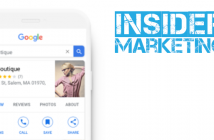As business consultants, one of the most common questions that we get is, “How do we get more people in the door?” Our first response always revolves around the same theme: “What’s your marketing budget?” While the old adage “you have to spend money to make money” may seem cliché, it’s true for many adventure operators. In fact, few of the operators that we speak to have enough money set aside for adequate marketing.
So what is the magic number? And how should that money be spent? These questions are hard to answer.
Actually, the first part is easy: A good rule of thumb is to allocate 15 percent of startup costs and 10 percent of ongoing gross revenue toward marketing dollars. Where to spend those dollars is the tricky question.
The reality is that allocation of marketing dollars really depends on your local market. For example, billboard signage works great in high-traffic interstate areas, but is a huge expenditure that doesn’t get the same kind of traction in an area where tourists don’t rent cars. Likewise, website traffic is great—if your target market is going to look for you online. Many tourists don’t even bring their computers when they go on vacation, so if this is your target market, you may want to focus most of your resources on your mobile site.
MARKET RESEARCH
So where to begin? Our recommendation is that you start by determining your market. We have had some of our best market research success by:
› contacting the local chamber of commerce. While not all chambers are created equal, these associations can be a great resource on demographic data, particularly if you live in a less touristy area and plan to attract a local market.
› meeting with the convention and visitors bureau. What chambers of commerce are to local markets, convention and visitors bureaus (CVBs) are to tourist markets. They are likely to have myriad data on tourism, including age, socioeconomic makeup, and number of visitors annually. This type of association can also be a great resource for word-of-mouth marketing.
› surveying existing clients. While you certainly can’t ask existing clients what their age or income is, you can ask them from where they traveled, how long they are in town, and the primary reason for their visit. This type of information can provide invaluable data.
› competitive analysis. The best way to find out who will be using your product is to find out who is going to your competitors. We typically use a 50-mile radius when reviewing competitors for aerial adventure parks. The Internet, including websites and travel review pages (i.e., TripAdvisor or Yelp) provides information, but nothing quite compares to visiting and exploring competing parks.
› checking out some of the indirect competition if competitors are limited, or you are the first aerial park to market in your area. This may include mountain biking outfitters, kayak shops, or the local rock climbing gym.
BRANDING
At the center of all great marketing is a great brand. Your logos, colors, fonts, and images will (or should!) be displayed on all of your marketing materials, so it’s important to get this right.
If you already have a branding packet in place, we recommend reviewing it at least once every couple of years. Here are some things to consider:
› Logos should be clean and relatively simple, with colors that match the rest of your branding materials. You don’t need to have a climber on your logo, because that’s what the rest of your marketing materials convey.
› Make sure that images are up to date and reflect your target market. If your main demographic is families, don’t hire Ninja Warrior-style athletes to pose for your photos. Likewise, if an attraction is geared mainly toward children, include kids in both the photos and written description. Visitors often complain marketing materials misled into thinking a park offered more for them.
› Keep the colors, fonts, and logos consistent among all of your different materials. If you’ve gone through a recent rebrand, recycle all of those old brochures and staff shirts that don’t match your most up-to-date images.






